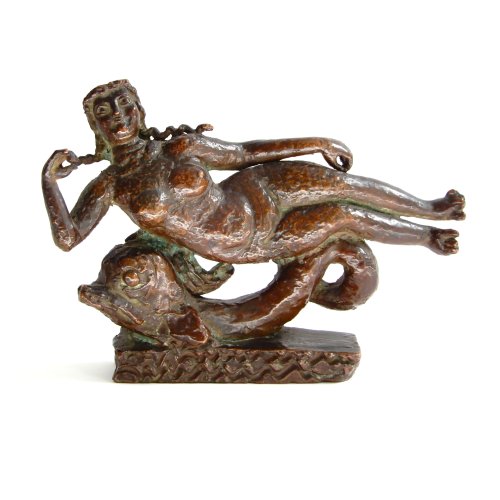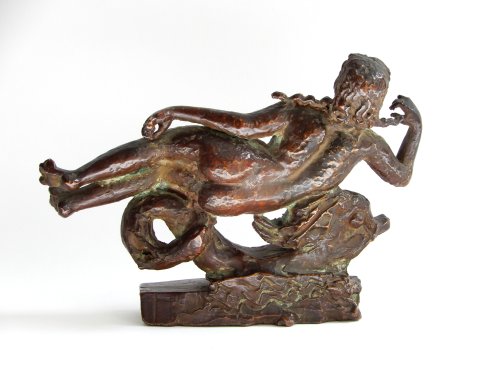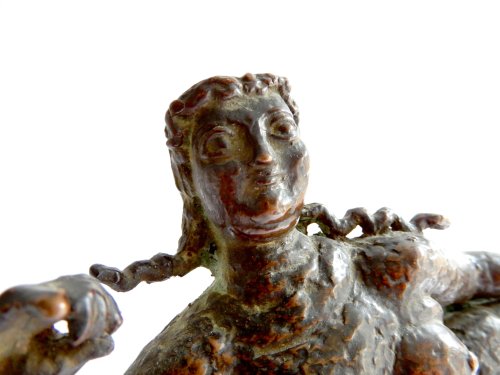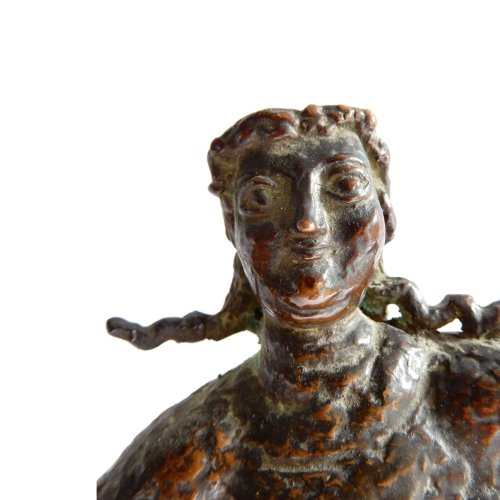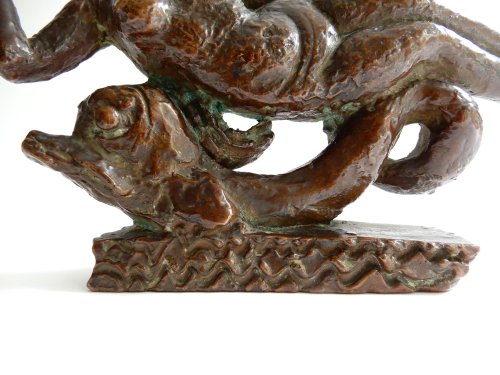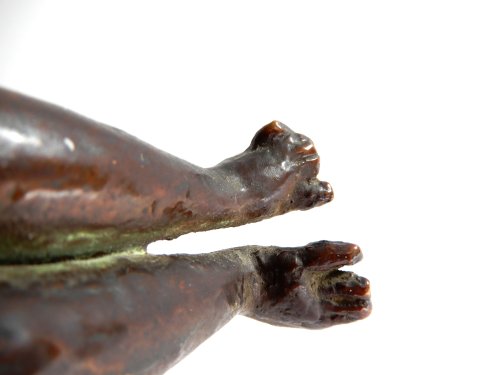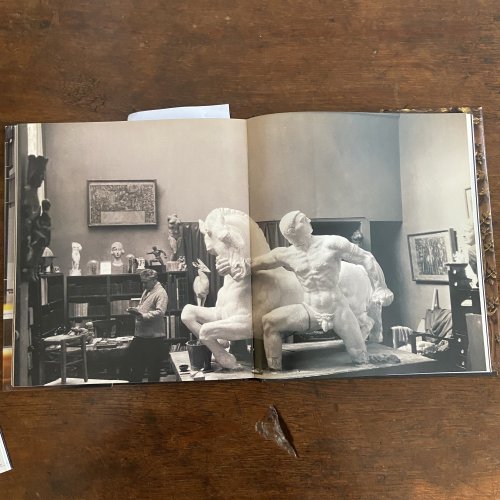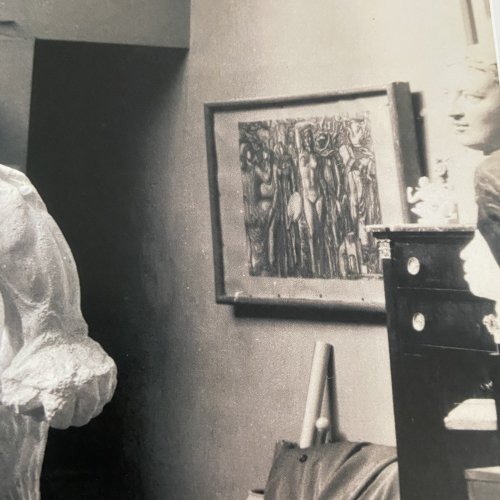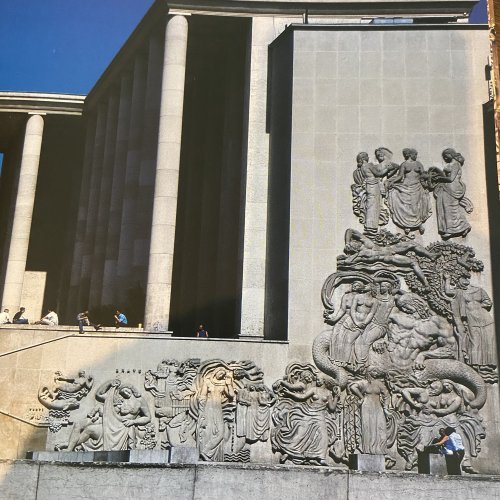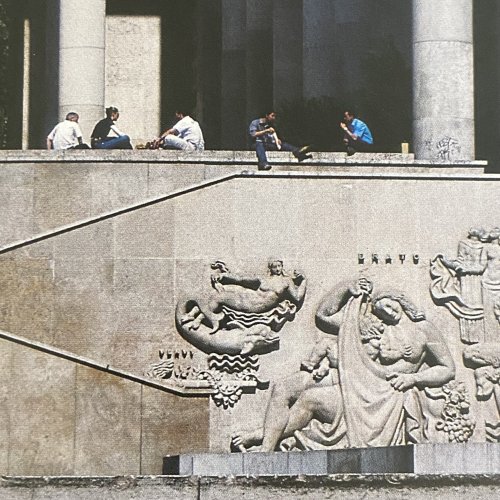Alfred-Auguste Janniot (1889-1969) Venus with a dolphin
About this piece
This beautiful Venus is a study in plaster by the sculptor Alfred Janniot, it was later patinated with a bronze patina, giving it the appearance of a bronze. This Venus on dolphin was made between 1934 and 1936 as a first study for the huge entrance of the Palais de Tokyo in Paris, which opened in 1937. The entrance consisted of two parts, the story of the earth and that of the sea. Janniot had an enormous predilection for classical Greek/Roman mythology. Which he used as a theme in this project. In the story of the sea, Venus on her dolphin is the first thing the story begins with.
This Venus is a unique specimen. Cécile, Janniot's wife and muse, whom he married in 1933, liked this Venus so much that he decided to make a smaller gilt bronze one to wear as a brooch.
On an old photograph of Janniot in his studio,this Venus is standing in his studio, it is on a chest of drawers, it has not yet been patinated there. She probably ended up in his house at some point, because the Venus was not destroyed in the bombing of his studio in 1943.
Venus represents beauty and love, this Venus has a special beauty with an almost mysterious smile, she has something innocent and touching in her appearance, but she also makes me happy with her wiggly toes and her strands of hair that look like pigtails, riding on her dolphin. There is movement in it, it is alive. Janniot even used the base to represent the waves of the sea.
In short, a rare, beautiful and unique work by Alfred Janniot, we are proud that it is now part of our collection.
The work is not signed, which makes sense for a study. It is a well-documented work.
Biography:
Alfred Auguste Janniot (June 13, 1889 – July 16, 1969), born in Montmartre, Paris.
He studied at the École Nationale des Beaux-Arts in Paris and was a student of Injalbert. After his military service he was mobilized during WWI. He then immediately went back to work as a sculptor. He won Prix de Rome in 1919 and left for the Villa de Medici in Rome for 3 years, where he made his masterpiece 'Hommage à Jean Goujon'. The work was exhibited at the 1925 World Exhibition Arts Décoratifs in Paris, in the pavilion of good friend and admirer Emile Ruhlmann. He has made several works in commission for Emile Ruhlmann.
Janniot was inspired by Greco-Roman mythology and the Bible. He developed a neoclassical style but with a modernist stylized interpretation and was very successful.
He was also strongly influenced by Antoine Bourdelle, who taught him many techniques in stone and led him to choose a career focused on monumental and architectural sculpture.
In 1928 he was commissioned to make the stone reliefs of the facade for the Musée Coloniale, then intended for the Colonial World Exhibition in 1931. He worked on this for 2 years, together with hired sculptors who helped create his designs. Today the building serves as a museum in Paris and is world famous for its beautiful impressive reliefs of oceans, ships, jungle, with animals such as zebras, elephants and many other animals.
The golden facade of 'Maison Francaise' in Rockefeller Center, New York is also by him, as is the famous entrance of Palais Tokyo (1937), for which he made this Venus. During his working life he made many architectural and monumental sculptures such as fountains, monuments and bas-reliefs, but he also made bas-reliefs for the grand salon of the great ocean liners such as the SS Ile-de-France (1927) and the SS Normandie (1935). ).
In 1933 he marries his beautiful younger wife Cécile Garny, who will always remain his muse and has been immortalized many times by him in stone or bronze, or in plaster.
During World War II, in September 1943, his studio was completely destroyed in a bombing raid, as a result of which much of his work has been lost forever.
In 1945, Janniot became a sculpture professor at the École des Beaux-Arts, in addition to his busy career.
Literature:
- 'Alfred Auguste Janniot 1889-1969', Somogy Éditions d'Art, Paris 2003. Anne Demeurisse - Légataire Universelle de Janniot. P. 24-25 en 141-142.
- Galerie Michel Giraud - "Alfred Janniot' ,Éditions Libraire du Passage, 2006. P. 89-93.
Condition
Excellent
Material:
Plaster
Measurements:
Length: 22 cm
(8,66")
Height: 16,5 cm
(6,5")
Depth: 5 cm
(1,97")
Period:
1934-1936
Origin:
France
Artist / atelier:
Alfred-Auguste Janniot,
